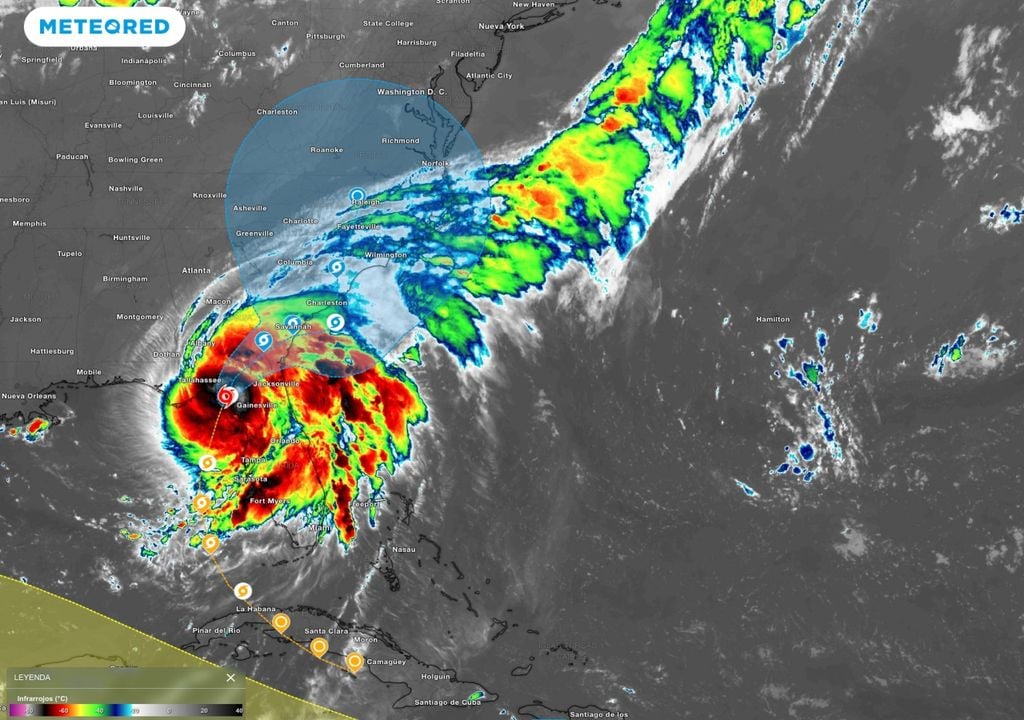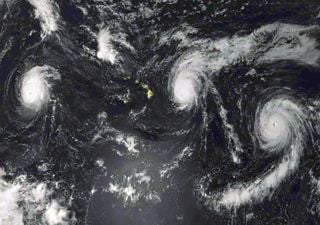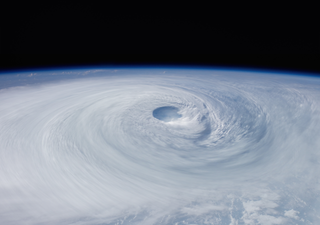Hurricane Debby hits Florida and causes catastrophic flooding! Watch the stunning footage!
Hurricane Debby makes landfall in northern Florida, causing catastrophic flooding and significant storm surge. It is expected to move slowly northeastward, bringing extreme rainfall to Georgia and the Carolinas.

Hurricane Debby finally makes landfall in the Big Bend region, a stretch of Florida's Gulf Coast. Debby will not be considered an extreme hurricane, as it only reached Category 1 strength out of the 5 that tropical systems can attain based on wind intensity. But Debby's greatest threat will be associated with the amount of rainfall and catastrophic flooding it will produce, and not just in Florida.
Hurricane Debby is characterised by its slow movement and heavy rainfall. Thus, in addition to the storm surge, it generates catastrophic flooding.
A few days ago, this system proved elusive from the start. Early last week, the National Hurricane Center issued a warning about conditions east of the Dominican Republic that appeared ripe for development. But at the time, no forecast model saw it clearly. Deterministic models and newer models based on artificial intelligence did not offer a unified forecast.
Debby intensifies into a category 1 hurricane as it nears the coast of Florida.
— CIRA (@CIRA_CSU) August 5, 2024
Hurricane Debby is forecasted to make landfall in the Florida panhandle on Monday morning. pic.twitter.com/5yzdu2jjFi
Eventually, as the system strengthened into a tropical depression and continued to move eastward, the potential development path included Florida. The system moved further east to turn north and skirt the west coast of Florida, where it strengthened into a tropical storm and then a hurricane. The entire coastline was hit by a major storm surge, which in the case of Fort Myers caused severe flooding.
Disastrous floods
After making landfall in northern Florida, Debby will quickly lose its hurricane status and become a tropical storm again, but the rainfall it will bring will be extreme. On the coasts of Georgia and South Carolina, some areas could see accumulations exceeding 700 mm. It is worth remembering that paralleling the east coast of the United States is Interstate I-95, one of the main highways connecting Florida to the northeast of the country and linking the most populated cities in the country.
In the eye of Hurricane #Debby now and it is not a calm eye, still very windy. We are having to retreat out of Horseshoe Beach because the surge is pushing up HARD. Road into town is now a river pic.twitter.com/oIbePLFdpK
— Sierra Lindsey (@Sierra_Lindsey3) August 5, 2024
Early in the morning, the Air Force Reserve Hurricane Hunter aircraft detected that the centre of Debby had a minimum atmospheric pressure of 979 hPa and maximum winds of about 80 mph (130 km/h). It was moving north-northeast at 11 mph (17 km/h). At that time, the hurricane was moving north-northeast at 11 mph (17 km/h). At a news conference, Florida Governor Ron de Santis said, "We've seen significant storm surges, we've seen flooding, we've seen and we'll continue to see flooding in various parts of Florida."
It also reinforced the National Hurricane Center's message that "this storm is expected to move through northern and central Florida, and possibly Georgia and the Carolinas." More than 135,000 customers were without power in Florida early Monday, according to PowerOutage.us, which tracks power outages.
Debby's rains are the subject of great attention in the north of the country
The outlook for the next few days differs considerably between the different forecast models. The models that have fitted the situation best from the start, ECMWF and the German ICON, note that the most likely scenario is that of a tropical storm and then a tropical depression moving northward along the US east coast. For the next 48 hours, the consensus is that Debby will produce extreme rainfall over eastern Georgia and South Carolina.
#BREAKING: Significant storm surge and flooding are occurring as Tropical Storm Debby passes by pushing water into homes
— R A W S A L E R T S (@rawsalerts) August 4, 2024
#FortMyers | #Flordia
Currently, significant storm surge and flooding are impacting Fort Myers Beach, Florida, as Tropical Storm Debby passes by. pic.twitter.com/KRWXtmIsOa
If this estimate comes to fruition, we could be facing catastrophic flooding, something that has already been indicated by the National Hurricane Center. As can be seen, the impact of a hurricane is not necessarily always correlated with the intensity of the wind. In this case, the slow movement of the system towards the north would lead to excessive accumulation of precipitation and an increased risk of flooding.
Further out, the eye is on the Mid-Atlantic and Northeast. While there are still several days left, there is a chance the system could generate heavy rain and impact cities such as New York, which could see persistent heavy rain. It will be a challenging week for the Southeast and Eastern United States.








